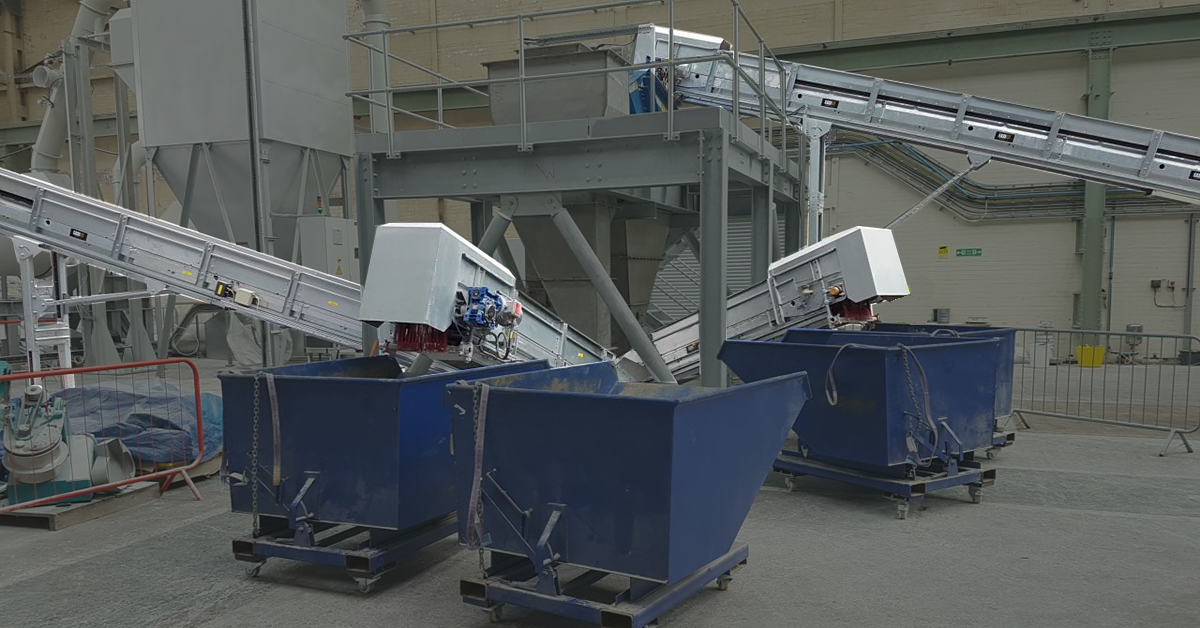Advanced Gasification Technologies:
One of the most promising innovations in WtE is advanced gasification technology. This process involves converting various waste types— from municipal solid waste (MSW) to agricultural residues—into a synthesis gas (syngas). The syngas can be utilized as a fuel for generating electricity or as a raw material in chemical synthesis. What sets advanced gasification apart is its higher efficiency, reduced emissions, and flexibility in handling diverse waste streams.
Plasma Arc Gasification:
Plasma arc gasification is a cutting-edge technology utilizing high-temperature plasma to break down waste into syngas. This process excels in treating hazardous, medical, and even contaminated materials like asbestos. Recycling professionals can leverage this technology to manage challenging waste streams while reducing environmental risks and generating valuable energy.
Anaerobic Digestion (AD) Systems:
Anaerobic digestion has gained prominence for its ability to convert organic waste into biogas through a biological process involving microorganisms without oxygen. AD systems effectively manage organic waste and produce biogas rich in methane. Recycling professionals can integrate these systems to tackle food waste from various sources, such as dining halls or food processing units, turning it into renewable energy and nutrient-rich digestate for agricultural use.
Thermal Depolymerization:
Thermal depolymerization is an innovative thermal conversion process that breaks down organic materials such as animal waste, plastics, and biomass into valuable products like crude oil, gas, and carbon solids. This technology is adaptable to various feedstocks and demonstrates the potential to minimize landfill waste while producing useful energy resources.
Hydrothermal Carbonization (HTC):
Hydrothermal carbonization is an eco-friendly process involving converting organic materials into biochar in a water-based environment at elevated temperatures and pressures. This technology can process wet biomass, sewage sludge, and organic residues, transforming them into a carbon-rich product suitable for soil improvement and carbon sequestration. Recycling professionals can explore HTC as a sustainable approach to managing organic waste while producing a valuable soil amendment.
Benefits and Implications for Recycling Professionals:
The latest innovations in WtE technologies offer several benefits and implications for recycling professionals:
Enhanced Waste Diversion: WtE technologies enable the conversion of waste materials into valuable resources, reducing reliance on landfills and promoting a circular economy.
Renewable Energy Generation: By harnessing energy from waste, recycling professionals can contribute to renewable energy production, minimizing the carbon footprint of waste disposal.
Diversification of Waste Streams: These innovations offer opportunities to handle a broader range of waste streams, including challenging or hazardous materials, improving overall waste management efficiency.
Integration with Recycling Initiatives: WtE technologies can complement recycling efforts by processing non-recyclable or contaminated materials, thereby reducing the volume of waste destined for disposal.
Challenges and Considerations:
While WtE technologies hold immense promise, challenges exist for their widespread adoption:
Initial Investment Costs: Implementing advanced WtE systems requires substantial capital investment, which might pose financial barriers for some recycling facilities.
Regulatory Compliance: Meeting stringent environmental regulations and obtaining necessary permits can be complex and time-consuming.
Public Perception and Acceptance: Overcoming public concerns regarding emissions, safety, and the perceived environmental impact of WtE technologies remains a significant challenge.
Conclusion:
The rapid evolution of Waste-to-Energy technologies offers hope for recycling professionals striving to achieve sustainable waste management. Embracing these innovations mitigates waste disposal challenges and presents opportunities for resource recovery and renewable energy generation. To fully harness the potential of WtE technologies, collaboration between recycling professionals, policymakers, and stakeholders is imperative to navigate challenges and drive sustainable practices in waste management.

























